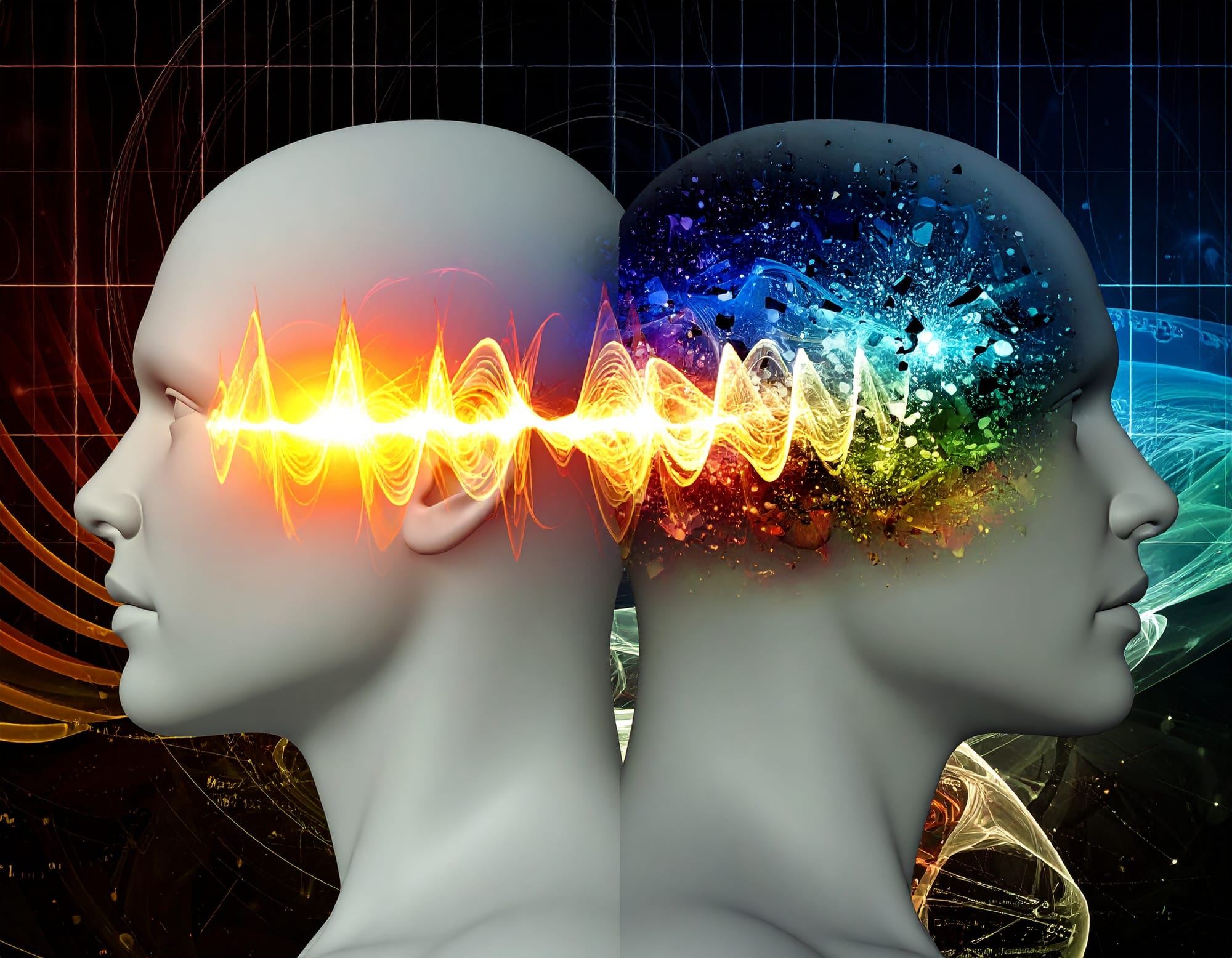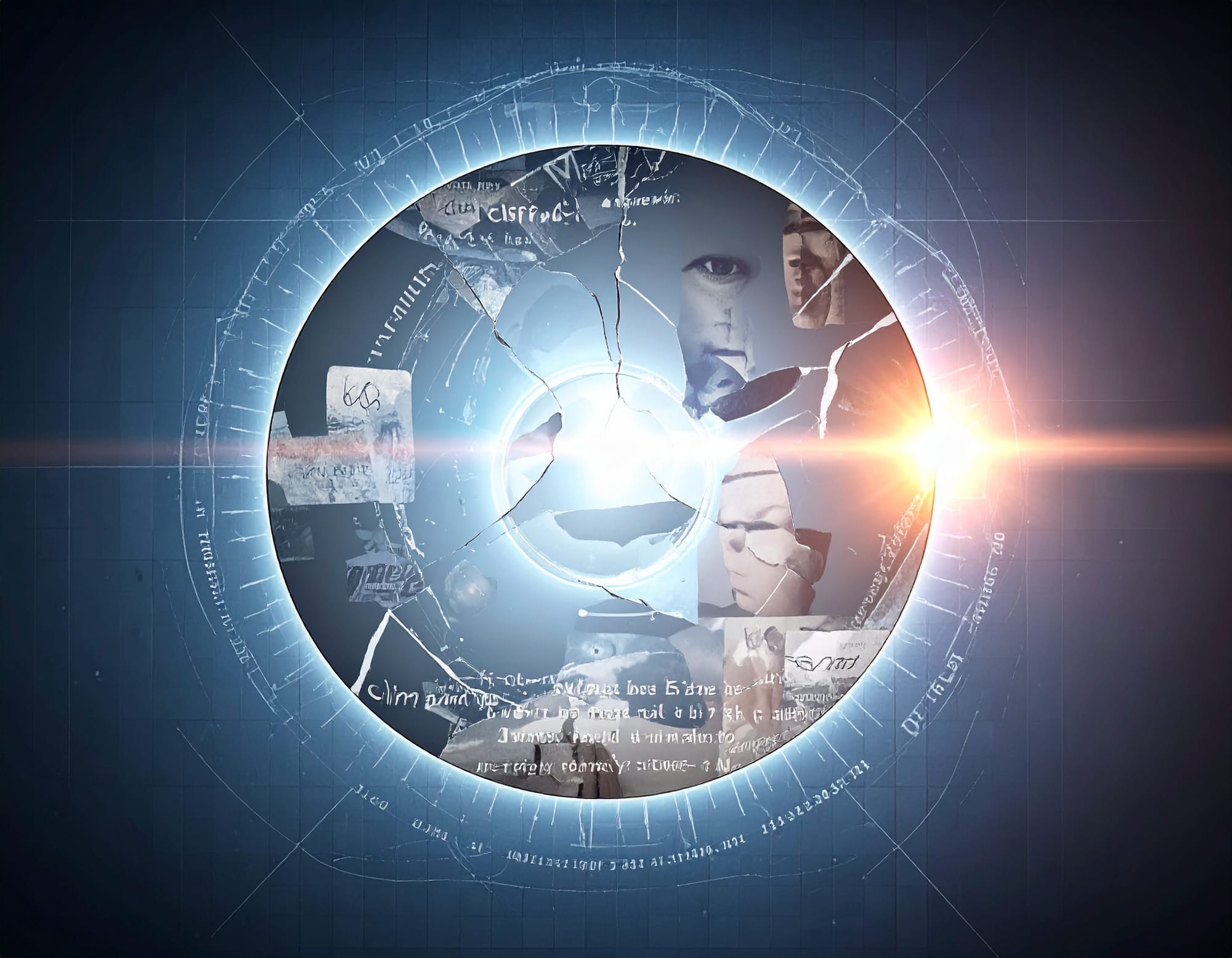Imagine two hikers gazing at the same sunset. One is overtaken by emotion, marveling at the colors as if nature has composed a symphony just for them. The other watches quietly, unmoved, their thoughts elsewhere. Two people, the same experience, yet entirely different reactions.
This divergence reflects more than personal preference; it reveals the intricate ways our minds filter the world around us. Think of it as a kind of Shazam for perception. Every moment, countless signals compete for attention. Our brains sift through them, identifying what resonates and discarding what doesn’t. One individual might "detect a melody," feeling drawn to a visual stimulus, while another hears only static, their mind’s lens focused elsewhere. This subtle interplay between biology, experience, and conscious choice shapes how we react not just to sunsets but to every stimulus—even something as provocative as seeing a person embodying sensuality.
But why does one person feel aroused while another remains indifferent? This is a story about more than raw biology; it’s about how we ascribe meaning to the signals around us and how those signals resonate differently depending on who we are in any given moment.
The Filters That Shape Perception
At its core, human reaction stems from a delicate balance of primal programming and elevated awareness. Visual stimuli, particularly those linked to attraction, tap into evolutionary instincts. Our ancestors were hardwired to recognize cues of fertility and fitness. They relied on these signals, crude though they were, to survive and reproduce. Today, remnants of this programming still whisper to us, but they don’t tell the whole story.
Our modern brains are not just reactive; they are interpretive. Think of your perception as a series of layered filters, each one sculpted by your environment, culture, and personal experiences. A single stimulus gets passed through these filters, emerging as unique as the fingerprint of the mind that receives it.
For example, one person might see a suggestive outfit and feel an immediate pull, an instinctual recognition tied to biological drives or unmet needs. Another might perceive the same sight but pass it through a more refined filter. They see not just flesh but context, humanity, or even humor in the moment. Their interpretation, their “signal,” becomes fundamentally different because their lens has been shaped by different inputs.
The Role of Overexposure in Emotional Numbness
We live in an age of overstimulation. Imagine a Shazam user in a noisy room, surrounded by overlapping songs. Their device struggles to identify any one tune. Similarly, our visual and emotional fields today are cluttered with idealized images, hyper-curated for maximum emotional effect. On social media, in advertising, and even in art, the extraordinary becomes commonplace, eroding our sense of wonder.
For some, this overexposure leads to desensitization. The stimuli that once might have evoked intense reactions now fall flat, filtered unconsciously as "background noise." Others respond by heightening their sensitivity, craving increasingly novel or extreme forms of stimulation to break through the fog. These are not just random variations; they speak to how our environments rewire our perception over time.
Consciousness as the Conductor
While biology strikes the first note and environment composes the tune, consciousness ultimately conducts the symphony. There’s something profoundly human about the ability to step back from an instinctual reaction and ask, “Why do I feel this way? Or why don’t I?” This layer of reflection transforms knee-jerk responses into opportunities for clarity, growth, and purpose.
Take, for example, the individual who remains nonchalant in the face of attraction. It might be due to mindfulness, the conscious choice to deprioritize the visceral and align their focus with higher-order goals. This isn’t indifference; it’s intentionality. It’s the realization that while biology plays its part, we’re not confined to being passive recipients of its cues.
On the other hand, someone who feels intense arousal isn’t simply a slave to instinct. Their reaction might stem from deeper emotional currents, such as longing or the search for connection. Both states of being are valid, and each reveals something profound about how we relate to ourselves and the world.
Signals, Stories, and Human Uniqueness
Reactions to stimuli don’t happen in a vacuum. They are steeped in stories we tell ourselves. A sudden feeling of arousal might not just reflect attraction but also a narrative tied to self-worth, validation, or curiosity. What do we see in the moments that move us? Are we chasing something external, or is the stimulus a mirror reflecting deeper desires inside ourselves?
For those who feel detached, the story might be different. Their indifference could be a sign of contentment, a focus shifted to other pursuits that matter more deeply to them. Or it could hint at unresolved emotions, a barricade against vulnerability. What’s fascinating about these stories is how they diverge, even when the external stimulus remains constant.
Breaking Through the Noise
Ultimately, navigating this complex interplay of instinct, environment, and consciousness is less about labeling reactions as "right" or "wrong" and more about understanding them. What if we treated every reaction as data, clues to decode—not just about the stimulus but about ourselves?
Consider this analogy. When Shazam identifies a song, it doesn’t just tell you what you’re hearing; it gives you a context, the artist and the album, placing the sound in its broader narrative. Imagine if we could do this with our own emotional responses. What if, rather than judging or ignoring our reactions, we contextualized them? What artist composed this emotional chord? What life album does it belong to? These insights could help us lead richer, more purposeful lives.
Tuning Into the Signals That Matter
The stimulus itself is rarely the most important part of the equation. The way we interpret it, the energy we give it, and the depth of thought we allow it to provoke—that’s where we find meaning. Whether we feel arousal or indifference, spark or calm, the beauty lies in what it all represents about where we are in our lives.
The challenge isn’t to feel the “right” reaction but to tune in to the ones that lead us toward greater understanding. Just as Shazam helps us discover not just the song but the hidden melodies in our surroundings, conscious attention reveals the layers beneath each stimulus. It reminds us that every reaction, like every song, has the potential to teach us something new.
Because in the end, whether we hear music or silence, both remind us of the profound complexity of being human. It’s not about whether we react; it’s about what we choose to do with those reactions once we notice them.
Imagine two hikers gazing at the same sunset. One is overtaken by emotion, marveling at the colors as if nature has composed a symphony just for them. The other watches quietly, unmoved, their thoughts elsewhere. Two people, the same experience, yet entirely different reactions.
This divergence reflects more than personal preference; it reveals the intricate ways our minds filter the world around us. Think of it as a kind of Shazam for perception. Every moment, countless signals compete for attention. Our brains sift through them, identifying what resonates and discarding what doesn’t. One individual might "detect a melody," feeling drawn to a visual stimulus, while another hears only static, their mind’s lens focused elsewhere. This subtle interplay between biology, experience, and conscious choice shapes how we react not just to sunsets but to every stimulus—even something as provocative as seeing a person embodying sensuality.
But why does one person feel aroused while another remains indifferent? This is a story about more than raw biology; it’s about how we ascribe meaning to the signals around us and how those signals resonate differently depending on who we are in any given moment.
The Filters That Shape Perception
At its core, human reaction stems from a delicate balance of primal programming and elevated awareness. Visual stimuli, particularly those linked to attraction, tap into evolutionary instincts. Our ancestors were hardwired to recognize cues of fertility and fitness. They relied on these signals, crude though they were, to survive and reproduce. Today, remnants of this programming still whisper to us, but they don’t tell the whole story.
Our modern brains are not just reactive; they are interpretive. Think of your perception as a series of layered filters, each one sculpted by your environment, culture, and personal experiences. A single stimulus gets passed through these filters, emerging as unique as the fingerprint of the mind that receives it.
For example, one person might see a suggestive outfit and feel an immediate pull, an instinctual recognition tied to biological drives or unmet needs. Another might perceive the same sight but pass it through a more refined filter. They see not just flesh but context, humanity, or even humor in the moment. Their interpretation, their “signal,” becomes fundamentally different because their lens has been shaped by different inputs.
The Role of Overexposure in Emotional Numbness
We live in an age of overstimulation. Imagine a Shazam user in a noisy room, surrounded by overlapping songs. Their device struggles to identify any one tune. Similarly, our visual and emotional fields today are cluttered with idealized images, hyper-curated for maximum emotional effect. On social media, in advertising, and even in art, the extraordinary becomes commonplace, eroding our sense of wonder.
For some, this overexposure leads to desensitization. The stimuli that once might have evoked intense reactions now fall flat, filtered unconsciously as "background noise." Others respond by heightening their sensitivity, craving increasingly novel or extreme forms of stimulation to break through the fog. These are not just random variations; they speak to how our environments rewire our perception over time.
Consciousness as the Conductor
While biology strikes the first note and environment composes the tune, consciousness ultimately conducts the symphony. There’s something profoundly human about the ability to step back from an instinctual reaction and ask, “Why do I feel this way? Or why don’t I?” This layer of reflection transforms knee-jerk responses into opportunities for clarity, growth, and purpose.
Take, for example, the individual who remains nonchalant in the face of attraction. It might be due to mindfulness, the conscious choice to deprioritize the visceral and align their focus with higher-order goals. This isn’t indifference; it’s intentionality. It’s the realization that while biology plays its part, we’re not confined to being passive recipients of its cues.
On the other hand, someone who feels intense arousal isn’t simply a slave to instinct. Their reaction might stem from deeper emotional currents, such as longing or the search for connection. Both states of being are valid, and each reveals something profound about how we relate to ourselves and the world.
Signals, Stories, and Human Uniqueness
Reactions to stimuli don’t happen in a vacuum. They are steeped in stories we tell ourselves. A sudden feeling of arousal might not just reflect attraction but also a narrative tied to self-worth, validation, or curiosity. What do we see in the moments that move us? Are we chasing something external, or is the stimulus a mirror reflecting deeper desires inside ourselves?
For those who feel detached, the story might be different. Their indifference could be a sign of contentment, a focus shifted to other pursuits that matter more deeply to them. Or it could hint at unresolved emotions, a barricade against vulnerability. What’s fascinating about these stories is how they diverge, even when the external stimulus remains constant.
Breaking Through the Noise
Ultimately, navigating this complex interplay of instinct, environment, and consciousness is less about labeling reactions as "right" or "wrong" and more about understanding them. What if we treated every reaction as data, clues to decode—not just about the stimulus but about ourselves?
Consider this analogy. When Shazam identifies a song, it doesn’t just tell you what you’re hearing; it gives you a context, the artist and the album, placing the sound in its broader narrative. Imagine if we could do this with our own emotional responses. What if, rather than judging or ignoring our reactions, we contextualized them? What artist composed this emotional chord? What life album does it belong to? These insights could help us lead richer, more purposeful lives.
Tuning Into the Signals That Matter
The stimulus itself is rarely the most important part of the equation. The way we interpret it, the energy we give it, and the depth of thought we allow it to provoke—that’s where we find meaning. Whether we feel arousal or indifference, spark or calm, the beauty lies in what it all represents about where we are in our lives.
The challenge isn’t to feel the “right” reaction but to tune in to the ones that lead us toward greater understanding. Just as Shazam helps us discover not just the song but the hidden melodies in our surroundings, conscious attention reveals the layers beneath each stimulus. It reminds us that every reaction, like every song, has the potential to teach us something new.
Because in the end, whether we hear music or silence, both remind us of the profound complexity of being human. It’s not about whether we react; it’s about what we choose to do with those reactions once we notice them.















